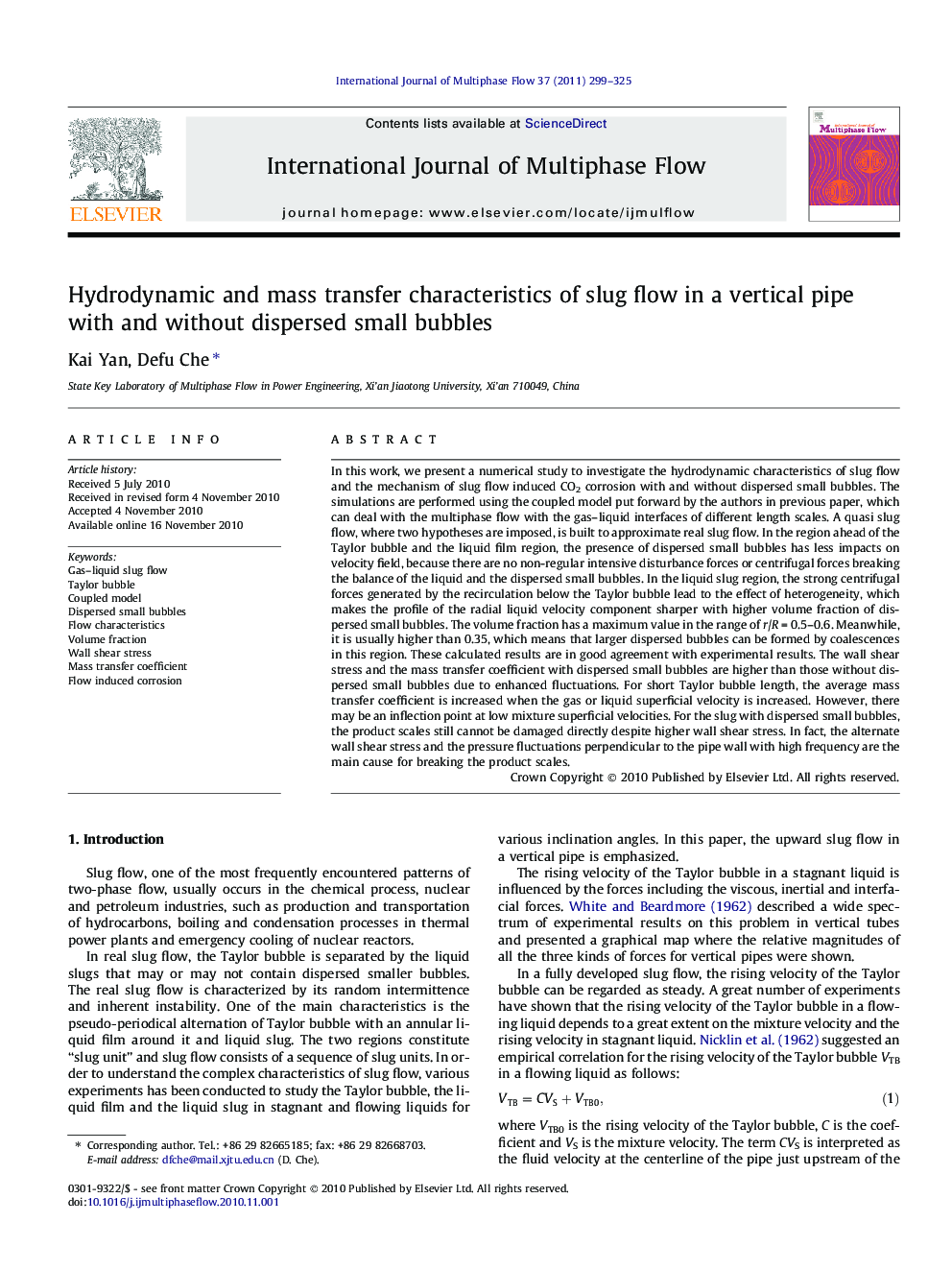| کد مقاله | کد نشریه | سال انتشار | مقاله انگلیسی | نسخه تمام متن |
|---|---|---|---|---|
| 666869 | 1458548 | 2011 | 27 صفحه PDF | دانلود رایگان |

In this work, we present a numerical study to investigate the hydrodynamic characteristics of slug flow and the mechanism of slug flow induced CO2 corrosion with and without dispersed small bubbles. The simulations are performed using the coupled model put forward by the authors in previous paper, which can deal with the multiphase flow with the gas–liquid interfaces of different length scales. A quasi slug flow, where two hypotheses are imposed, is built to approximate real slug flow. In the region ahead of the Taylor bubble and the liquid film region, the presence of dispersed small bubbles has less impacts on velocity field, because there are no non-regular intensive disturbance forces or centrifugal forces breaking the balance of the liquid and the dispersed small bubbles. In the liquid slug region, the strong centrifugal forces generated by the recirculation below the Taylor bubble lead to the effect of heterogeneity, which makes the profile of the radial liquid velocity component sharper with higher volume fraction of dispersed small bubbles. The volume fraction has a maximum value in the range of r/R = 0.5–0.6. Meanwhile, it is usually higher than 0.35, which means that larger dispersed bubbles can be formed by coalescences in this region. These calculated results are in good agreement with experimental results. The wall shear stress and the mass transfer coefficient with dispersed small bubbles are higher than those without dispersed small bubbles due to enhanced fluctuations. For short Taylor bubble length, the average mass transfer coefficient is increased when the gas or liquid superficial velocity is increased. However, there may be an inflection point at low mixture superficial velocities. For the slug with dispersed small bubbles, the product scales still cannot be damaged directly despite higher wall shear stress. In fact, the alternate wall shear stress and the pressure fluctuations perpendicular to the pipe wall with high frequency are the main cause for breaking the product scales.
Journal: International Journal of Multiphase Flow - Volume 37, Issue 4, May 2011, Pages 299–325